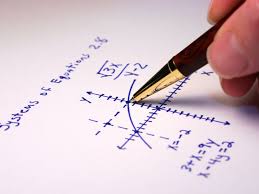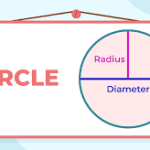To isolate a variable in an inequality, identify the variable terms. Use inverse operations to isolate it. Add or subtract constants to simplify. Multiply or divide to further isolate. Balance by applying operations to both sides. Remember to flip inequality signs with negative numbers. Addition/subtraction help simplify. Combine like terms and change signs without altering the rules. For complex situations, break it down into parts. Graph for visualization and analyze scenarios separately. Find all possible solutions for better understanding techniques. Master these skills for efficient inequality solving. More insights await your exploration.
Importance of Isolating Variables in Inequalities
Isolating variables in inequalities is crucial for simplifying and solving mathematical expressions efficiently. By isolating a variable, you focus on that specific unknown quantity, making it easier to understand its impact on the overall inequality. This process allows you to manipulate the inequality to find the range of values that satisfy the given conditions, providing a clear path to the solution.
When you isolate variables in inequalities, you break down complex problems into manageable parts, enabling you to identify the relationships between different elements of the expression. This focused approach helps you see how changes in one part of the inequality affect the solution, leading to a more systematic and strategic problem-solving method.
Moreover, isolating variables enhances your ability to compare different scenarios and analyze how varying parameters influence the outcome. It empowers you to make informed decisions based on the relationships between the variables, ultimately improving your problem-solving skills in mathematics.
Basic Steps for Isolating Variables
To isolate variables in inequalities, start by identifying the terms containing the variable you want to isolate. Look for the term that has the variable you’re trying to isolate, typically on one side of the inequality.
Once you have identified this term, focus on performing inverse operations to isolate the variable. The goal is to get the variable by itself on one side of the inequality symbol. Begin by adding or subtracting constants to simplify the expression. Remember, whatever operation you perform on one side of the inequality, you must do the same to the other side to keep the inequality balanced.
After simplifying the expression as much as possible, consider using multiplication or division to further isolate the variable. Multiply or divide both sides by the coefficient of the variable term to remove it from the side containing the variable. Be cautious when multiplying or dividing by negative numbers, as this will reverse the direction of the inequality.
Following these basic steps will help you effectively isolate variables in inequalities.
Multiplication and Division Techniques
When isolating variables in inequalities, employing multiplication and division techniques is crucial for further simplifying the expression and isolating the variable effectively. To isolate a variable using multiplication and division, you need to perform the inverse operation of what’s being done to the variable in the inequality.
If the variable is being multiplied by a number, you can isolate it by dividing both sides of the inequality by that number. Similarly, if the variable is being divided by a number, you can isolate it by multiplying both sides of the inequality by that number. Remember, when multiplying or dividing by a negative number, flip the inequality sign to maintain the correct relationship between the quantities.
Addition and Subtraction Methods
Shifting to the Addition and Subtraction Methods, you can effectively manipulate inequalities by applying operations that involve adding or subtracting values to isolate the variable. When dealing with inequalities, the goal remains the same: isolate the variable to determine the range of values it can take.
To do this using addition or subtraction, start by simplifying the inequality expression by combining like terms. You can add or subtract the same value from both sides of the inequality without affecting the solution. This method allows you to change the inequality sign without altering the fundamental principles.
For instance, if you have an inequality like 2x – 5 > 7, you can isolate the variable x by first adding 5 to both sides, resulting in 2x > 12. Then, divide by 2 to find x > 6 as the solution. These addition and subtraction techniques provide a straightforward approach to solving inequalities and isolating variables efficiently.
Advanced Strategies for Complex Inequalities
Engage in creative problem-solving techniques to tackle intricate inequality scenarios effectively. When faced with complex inequalities, consider utilizing advanced strategies to navigate through them successfully. One approach is to break down the inequality into smaller parts and solve each part individually. This method can simplify the overall problem and make it more manageable.
Another useful technique is to graph the inequality on a number line to visually represent the solution set. By identifying the critical points and regions on the number line, you can determine the intervals where the inequality holds true. This graphical approach provides a clear visualization of the solution space.
Additionally, when dealing with inequalities involving absolute values or multiple variables, consider separating the cases and analyzing each scenario separately. This method can help in identifying all possible solutions and ensuring a comprehensive understanding of the inequality.
Frequently Asked Questions
Can You Provide Examples of Real-World Applications Where Isolating Variables in Inequalities Is Crucial?
In real life, isolating variables in inequalities is key. From budgeting to designing bridges, understanding how changing one factor affects the outcome is crucial. Mastering this skill empowers you to make informed decisions.
How Can I Determine if I Need to Isolate a Variable in an Inequality Before Solving It?
Before solving an inequality, assess if isolating the variable simplifies the process. Look for situations where isolating the variable clarifies the solution. It helps streamline calculations and often makes the inequality easier to solve.
Are There Any Common Mistakes to Avoid When Isolating Variables in Inequalities?
When isolating variables in inequalities, avoid errors like forgetting to perform the same operation on both sides, misinterpreting inequality signs, and neglecting to simplify expressions fully. Stay vigilant to accurately solve and interpret solutions.
Can You Explain How to Deal With Absolute Value Inequalities When Isolating Variables?
When dealing with absolute value inequalities and isolating variables, remember to carefully consider the positive and negative cases, ensuring you account for both scenarios to accurately solve the inequality. Practice makes perfect!
Are There Any Shortcuts or Tips for Quickly Isolating Variables in Complex Inequalities?
When dealing with complex inequalities, simplify by focusing on one variable at a time. Use inverse operations to isolate the variable. Remember shortcuts like combining like terms and distributing to streamline the process.
Conclusion
So next time you’re faced with an inequality, remember to isolate the variable to find the solution.
By using multiplication, division, addition, and subtraction techniques, you can simplify complex inequalities and make them easier to solve.
Practice these strategies and soon you’ll be a pro at isolating variables in inequalities.
Keep up the good work and never stop learning!


